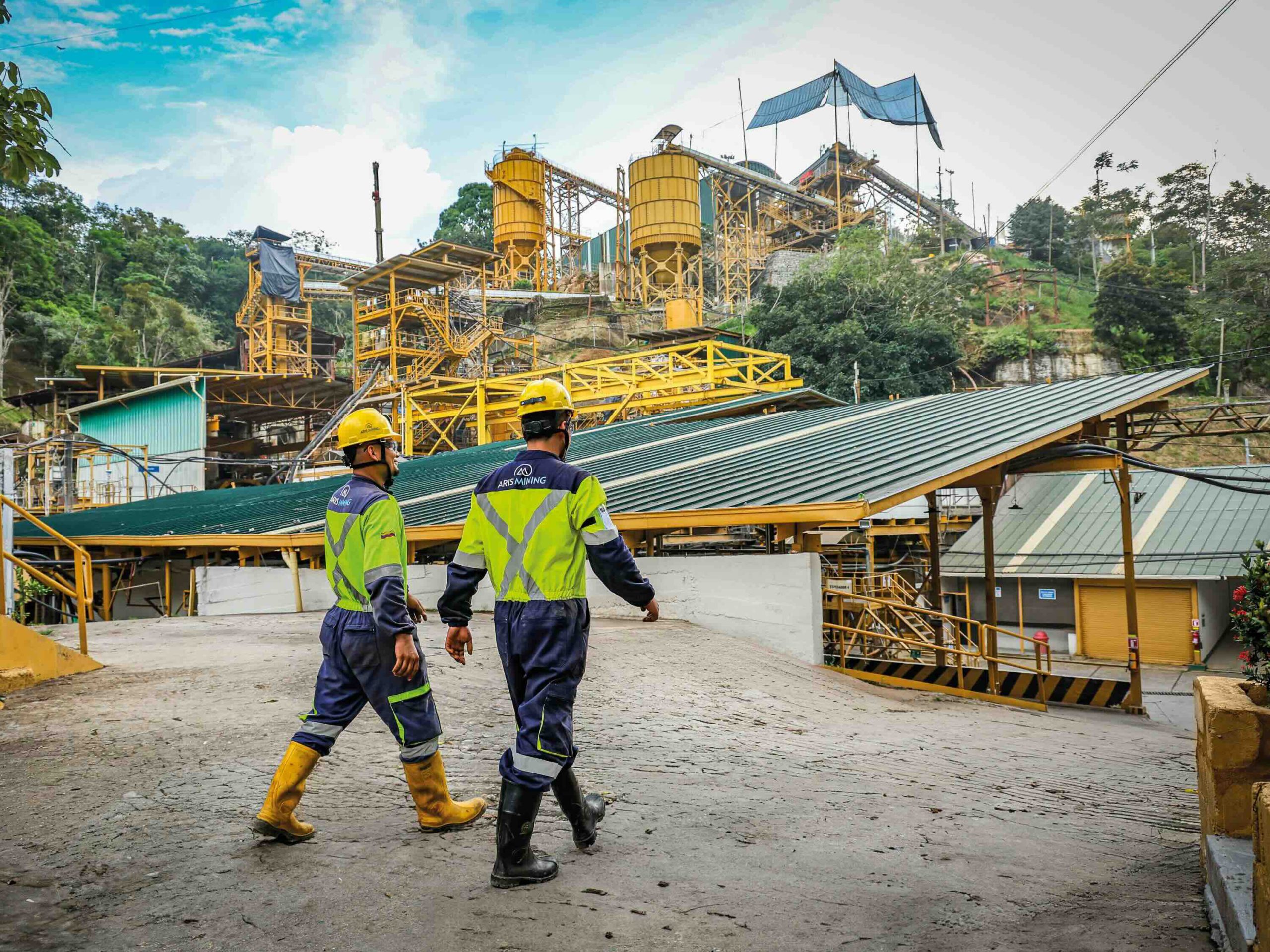Rediscovering Red Lake

Evolution Mining’s Red Lake complex, with Cochenour infrastructure in foreground. Credit: Evolution Mining
Between Evolution Mining’s investment in the Red Lake mine, Great Bear Resources’ exploration success at Dixie, Pure Gold Mining opening up a second mine in the camp, and Battle North Gold planning a third – Red Lake is seeing renewed interest.
Evolution Mining made its entrance into Red Lake, Ont., only last year, after striking a deal with Newmont for the historic Red Lake gold complex in late 2019.
The complex has a long and prolific history, with production of more than 25 million oz. at grades of over 20 g/t gold since the late 1940s.
Once the crown jewel in Goldcorp’s portfolio, the mine suffered from underinvestment and declining grades and resources in recent years. But, in line with its strategy of acquiring assets with long life potential in “well-endowed geological terranes,” Evolution saw the opportunity to turn it into a cornerstone asset, while restoring Red Lake to some of its former glory.
It paid Newmont US$375 million for the mine upfront, with another US$100 million contingent on new discoveries.
Over a first-phase, three-year plan, the Australian miner plans to increase production to 200,000 oz. gold annually at all-in sustaining costs (AISC) of less than US$1,000 per oz. To do so, it committed to spending US$50 million in exploration on drilling of over 100,000 metres per year to grow resources and reserves.
“There’s lots of work ahead of us at Red Lake, but I am confident that we are well on our way to restoring the operation to being one of Canada’s premier gold mines,” said Evolution’s executive chairman, Jake Klein, on a conference call in February.
Production at the complex, which consists of the Red Lake and Campbell mines, still has a ways to go. In the six months ended in December 2020, the operation produced 60,347 oz. gold at AISC of A$1,997 (US$1,571) per oz. But step by step, Evolution has been following through with its improvements. Not quite a year into its ownership of the mine (the acquisition closed in April 2020), the miner says its transformation plan is ahead of schedule.
So far, Evolution has boosted reserves and resources at the mine, increased development rates, and shut its Red Lake mill temporarily to focus on improving performance at its Campbell mill. It also downsized the mine workforce by 26%.
With improvements at the Campbell mill taking hold and the facility recently reaching full capacity (97% utilization), the company reported in early 2021 that it will restart the Red Lake mill shortly, using stockpiled ore.
In February, Evolution also approved the development of a new A$60-70 million decline that will extend to 1,200 metres depth and boost mine production. The Campbell Young Dickenson decline will open up two new mine fronts that don’t rely on existing shaft infrastructure. Starting in the third quarter of 2022, the decline is expected to add production of 1 million tonnes per year, and provide access to the Upper Campbell deposit – which contains over half of the mine’s recently announced 2.9 million oz. gold in reserves.
That production increase will mean the operation will go from a position of not being able to feed the two mills onsite (which, together have a capacity of 1.1-1.3 million t/y) to being mill constrained in the second half of 2022. (In the six months ending December 2020, the operation produced just shy of 300,000 tonnes.)
A study, slated for release in the second quarter, is underway to determine whether the best solution will be a mill expansion or a new mill. It will also lay out a plan for the company to reach its ultimate goal of 300,000-500,000 oz. a year of production at Red Lake. Assuming the study is positive, it will progress to the prefeasibility stage.
The reserves announced in February – 2.9 million oz. gold in 13.2 million tonnes at 6.9 g/t, based on A$1,450 per oz. gold –
are a good start towards that. “The significant gold endowment we have announced today makes us very confident about Red Lake being a core, long-life, low-cost asset in our portfolio.” Klein commented.
Last fall, Evolution announced a global resource estimate of 11 million oz. at the property. The JORC-compliant resource stands at 22.8 million indicated tonnes grading 7.7 g/t gold for 5.7 million oz. and 25.5 million inferred tonnes grading 6.49 g/t gold for 5.3 million oz.
Pure Gold Mining
A second Red Lake mine began production in December, with Pure Gold Mining announcing the first gold pour at its mine, just southwest of the Red Lake complex.
The company’s PureGold operation hosts the past-producing Madsen mine, which generated 2.5 million oz. gold over its history, beginning in the late 1930s. The site also hosted some newer infrastructure built in the 1990s by Claude Resources. As such, the mine was completed in a relatively short period after Pure Gold approved construction in August 2019.
A February 2019 feasibility study projected an initial capex of $95 million, and average annual production of 80,000 oz. gold at all-in sustaining costs of US$787 per oz. over a 12-year mine life.
Commercial production at the operation, with expected life-of-mine average grades of 9 g/t gold, is on track for the second quarter. But even as it ramps up to full production of 800 t/d, Pure Gold is focused on growth.
While the feasibility outlined a first-phase mine, the company is already looking at opportunities to increase the mining rate to up to 1,000 t/d by establishing a second mine access, in addition to the main West ramp at PureGold. Work began on the East portal last year, with the ramp now expected to provide access to ore stopes at the east end of the mine 12 months earlier than scheduled in the feasibility.
Studies for a phase three expansion of the mine and mill to more than 1,200 t/d are also starting this year.
Mining methods at the operation include longhole stoping, conventional cut-and-fill, and mechanized cut-and-fill. Processing includes a gravity circuit, pre-oxidation, leaching, a carbon-in-pulp circuit and electrowinning, and then refining to produce doré gold.
With the first-phase mine fully funded, Pure Gold plans to fund its growth through cash flow. Mining of current reserves, which stand at 3.5 million tonnes grading 9 g/t gold for 1 million oz., is expected to generate $1.2 billion in pre-tax cash flow at current gold prices.
Based on the success of ongoing drilling, which has hit high-grade mineralization near the main ramp and other infrastructure, the company believes it can add low-cost, near-term tonnes to the mine. Exploration and expansion drilling continues through the mine ramp-up, with at least 50,000 metres planned for the year.
Pure Gold is also working to accelerate access to deep high-grade zones at the operation. In particular, the company is looking forward to the fourth quarter, when expects to set up access to drill the ultra-high-grade 8-Zone from underground.
The 8-Zone already has an indicated resource of 458,000 tonnes grading 20.5 g/t gold for 301,000 oz. Historic drilling from underground has returned intervals including 4.3 metres of 466 g/t gold, 5.5 metres of 342.4 g/t gold and 8.2 metres of 120.4 g/t gold. Situated roughly 1 km below surface, the zone is open up and downplunge, and is geologically analogous to the Red Lake mine’s famous High-Grade Zone, which made Red Lake one of the lowest-cost, highest grade producers in the world in the early 2000s.
Resources at PureGold have so far been defined to 1,200 metres depth, with indicated resources at 7.2 million tonnes at 8.9 g/t gold for 2.1 million oz. Inferred resources add 1.9 million tonnes at 7.7 g/t gold for 467,000 oz.
A resource update incorporating another 50,000 metres of drilling is due in the second quarter. Once the mine achieves commercial production (also expected in the second quarter), Pure Gold will announce its first guidance numbers for the year.
Pure Gold’s holdings extend for 47 sq. km and host a 7-km gold system that includes several nearby, near-surface deposits, Wedge, Russet South and Fork, that are included in resources.
Battle North Gold
Red Lake will soon have a third mine, with Battle North Gold planning to start commercial production at its Bateman project before the end of 2022.
In February, the junior approved construction of the project, and capital spending of $59.1 million for the year. (With an additional $17.8 million in capitalized operating costs and $4 million spent last year on construction total capital comes to $80.9 million.)
Ore processing at the project’s 1,800 t/d mill (which is permitted for up to 1,250 t/d) is expected to start in late 2021, with a first gold pour possible before the end of the year.
Between its cash reserves ($65 million as of Nov. 5) and a US$40-million, 5-year, senior secured credit facility with Macquarie Bank, the development is fully financed.
Most of the mine infrastructure at Bateman is already in place. The mine was briefly put into production by Battle North – previously Rubicon Resources – in 2015, but without the benefit of completing a feasibility study. Trial mining demonstrated grades and tonnages that were lower than expected, with the geology of the nuggety F2 deposit proving more complex than previously understood.
Since then, the company has worked to better understand the deposit, including more closely spaced drilling, and a new geological model that was validated with a 35,000-tonne bulk sample taken in 2018.
As outlined in an October 2020 feasbility, Bateman contains proven and probable reserves of 3.6 million tonnes grading 5.54 g/t gold for 634,838 oz. The estimate was based on US$1,375 per oz. gold and a breakeven blended economic cutoff grade of 3.41 g/t gold.
The feasibility defined a $109.3-million, 8.2-year, 1,315 t/d underground operation with a 21-month construction and ramp-up period that includes 14 months of gold production to offset some capital expenditures. During commercial operations, production is expected to average 79,308 gold oz. annually, at all-in sustaining costs of US$865 per oz.
The study projected an after-tax internal rate of return of 50.3% and a net present value (at a 5% discount rate) of $305 million.
Battle North plans to complete 3,300 metres of underground development in 2021. A ramp decline is being constructed to add a second access point in addition to an existing 730-metre shaft.
The company also is conducting a $7-million, 22,000-metre exploration program at its 288-sq.-km of holdings this year.
Great Bear Resources
Three and a half years into exploration, Great Bear Resources still hasn’t released an initial resource for its Dixie project in Red Lake. But drill results – and the junior’s market cap of $785 million – indicate it’s onto something big.
In addition to vein-hosted, high-grade gold typical of Red Lake deposits, Great Bear has identified another type of mineralization at the 91.4-sq.-km project. At its LP Fault, the company has identified disseminated high-grade to lower-grade gold that is more typical of Hemlo style mineralization.
The high–grade gold within a lower grade mineralized halo makes it a bulk tonnage target, and so far Great Bear has hit gold in all holes drilled along 4.2 km of the LP Fault. Drilling has shown both continuity of gold at LP and a consistent high-grade component with grades typically upwards of 20 g/t gold.
The company drilled 112,000 metres at the Dixie project last year, with another 130,000 metres (budgeted at $25 million) planned for 2021.
Recent high-grade highlights intercepts from LP have included: 17 metres of 13.07 g/t gold from 195.5 metres and 8.1 metres of 32.01 g/t gold from 103.8 metres depth. Bulk-tonnage highlights include 45.5 metres of 3.67 g/t starting at 72 metres depth.
The company has now released results from 250 holes drilled at the LP Fault, with a total of 400 holes planned by the end of the year. The LP Fault system remains open in all directions.
With five drill rigs deployed, this year’s focus is on infill drilling at LP as well as depth drill testing. High-priority targets across the 22-km strike length of Dixie will also be tested.
In addition to LP, Dixie hosts the Dixie Limb and Hinge and Arrow zones, which host typical Red Lake style mineralization.
Great Bear, which is aiming to release an initial resource for Dixie this year, will provide an update on its exploration program in March.
After raising $70-million in a private placement of flow through and common shares in February, the company is well funded with more than $100 million in cash.





Comments
James Cyr
It is certainly good to see this area come alive again! Well done!